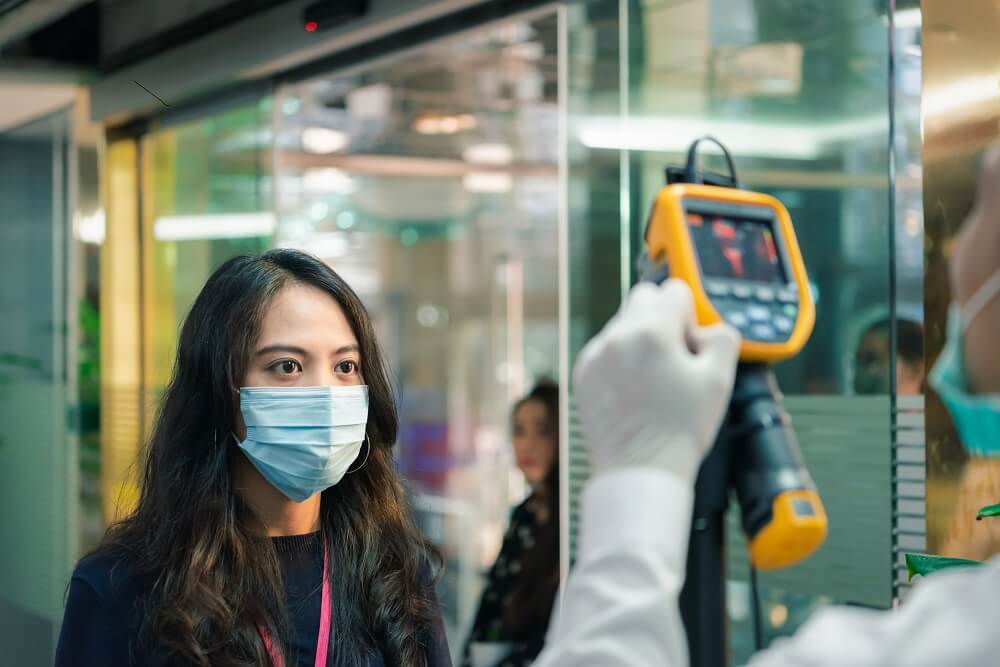Coronavirus (COVID-19) has spread at an unprecedented rate since the first case was reported in Wuhan, China. At first, it was concentrated only in China, but now it has reached over a hundred and fifty countries. As of April 10, the virus has infected over 1,621,756 people globally and caused upwards of 97,185 deaths. It has had a massive impact on the entire world. Therefore, the World Health Organization has declared it as a pandemic and health emergency. In comparison to the SARS outbreak in 2003, governments and companies can make use of new and emerging technologies to stave off the worst impacts of the virus. With the help of technology, public health bodies can be aided in creating a comprehensive understanding of the virus. It can also guide prevention measures, augment human support efforts, and facilitate virus research. One of the most useful tools at our disposal that can help us achieve this is Artificial Intelligence (AI).

In the past decade, AI has come a long way and now plays a significant role in the healthcare sector. AI has been able to introduce marvelous innovations in the healthcare sector. It has advanced computational and data-analytics tools. As a result, the medical profession’s understanding of infections and diseases has further deepened. The need to curb the spread of the virus is immediate. Government agencies are looking at AI-based techniques to provide insight into the virus’s spread. They are also relying on it to support the treatment of people who have been infected. The main area of focus of the medical community is to create a vaccine by analyzing the molecular structure of the virus. However, this has proven to be quite challenging due to the single-strand RNA structures of the virus. Like other viruses such as Ebola, HIV, etc. COVID-19 can mutate at an exponential rate. Thus, analyzing the virus and developing a vaccine is a difficult task.
Early Detection of the COVID-19
Several days before the Chinese government and international health organizations made official announcements, an AI had already detected the coronavirus. A Toronto-based startup identified the outbreak in Wuhan only a few hours after local authorities diagnosed the first cases. The most crucial feature of AI in combating such pandemics is its speed and the sheer volume of data it can work with. Humans alone cannot process this volume of data with the same speed and efficiency. AI has become a firewall against infectious diseases and pandemics. In the future, the prevention of disease outbreaks will lie with AI-based diagnostic tools.

Using AI to Fight Off the Virus
When China initiated its response against the virus, it heavily relied on artificial intelligence. With the help of its strong technology sector and data science technologies, China started to track and fight the infection. Even tech leaders and small companies joined the effort to combat COVID-19. Alibaba, Baidu, and Huawei, and many other industry leaders accelerated their company’s healthcare initiatives. Even tech companies were heavily involved in the application of technology to curb the spread of the virus.
Here are some ways in which AI can be used to combat COVID-19:
- For identifying, tracking, and forecasting outbreaks – AI can detect an outbreak by analyzing news reports, social media platforms, and government documents. The Canadian startup BlueDot provides the very same service.
- To diagnose the virus – Infervision launched a coronavirus AI solution that helps front-line healthcare workers detect and monitor the virus more effectively. Healthcare facilities, especially imaging departments, are taxed with heavy workload due to the virus. This solution significantly improves CT speed. Chinese e-commerce giant Alibaba has also built an AI-powered diagnostic system that can diagnose the virus in seconds.
- Process healthcare claims – Even the business and administrative divisions have to deal with the massive surge of patients. Ant Financial has created a blockchain platform that helps speed up claims processing. It also reduces the amount of physical interaction between patients and hospital staff.
- To deliver medical supplies – Drone delivery is one of the safest and fastest ways to deliver medical supplies during a disease outbreak. Terra Drones is using crewless aerial vehicles to transport medical supplies and quarantine material between China’s disease control centre and the People’s hospital. Drones can also be used for surveillance of public places. This can help identify people who are not following quarantine regulations. Even Baidu’s autonomous vehicles deliver food and supplies to Beijing Haidian Hospital.
- The use of robots for various tasks – Since robots are not susceptible to the virus, they can be used in tasks such as cleaning, sterilizing, and delivering food. This approach reduces the amount of human-to-human contact. UVD robots are capable of killing bacteria and viruses autonomously using ultraviolet light.
- Develop drugs – Google uses its DeepMind AI algorithms to understand the proteins that make up the virus. These findings can then be used by others to develop treatments.
- Advanced protection from fabrics – Several startups are offering more protection from viruses by using anti-bacterial materials that rely on metal-oxide particles. AI helps them construct the structures that provide the most protection.
- Identify infected individuals – China’s facial recognition surveillance systems use temperature detection software to identify people who have a fever. Applying the combined power of AI and data analytics, the government can find people who are more likely to have the virus.
- Using chatbots to share information – Chatbots in the travel and tourism industry can be very useful to keep travellers updated on the latest travel instructions. People can also access online health services through it.
- Use of supercomputers to develop a vaccine – Cloud computing resources and supercomputers are used to track the development of a vaccine for the virus. These systems can compute and run model solutions much faster than standard computer processing.

Source: Ars Electronica
Artificial intelligence and data science have become extremely critical in helping the world deal with the global pandemic COVID-19. Chinese technology giant Baidu’s Linearfold algorithm is available for scientific research and to aid medical teams in combating COVID-19. The company has also developed several useful tools to test for infections and raise public awareness. This has been achieved through the use of infrared systems that are powered by AI. Another Beijing-based company has released a deep learning platform, which powers pneumonia CT image analysis. Baidu’s AI-powered mapping technology is also being used to manage the flow of travel across high-risk areas.

Source: Technologyreview.com
With coronavirus spreading rapidly around the globe, AI can be used in various ways to track its containment and reduce people’s exposure to it. AI has an array of versatile functions such as forecasting the spread of the virus, influence public perception, developing vaccines, and offering support to infected people. The COVID-19 global pandemic has displayed the degree of sheer power that digital technology has over us. In the entirety of human history, there has never been a time during which people have built networks, and shared information at such a massive scale.









